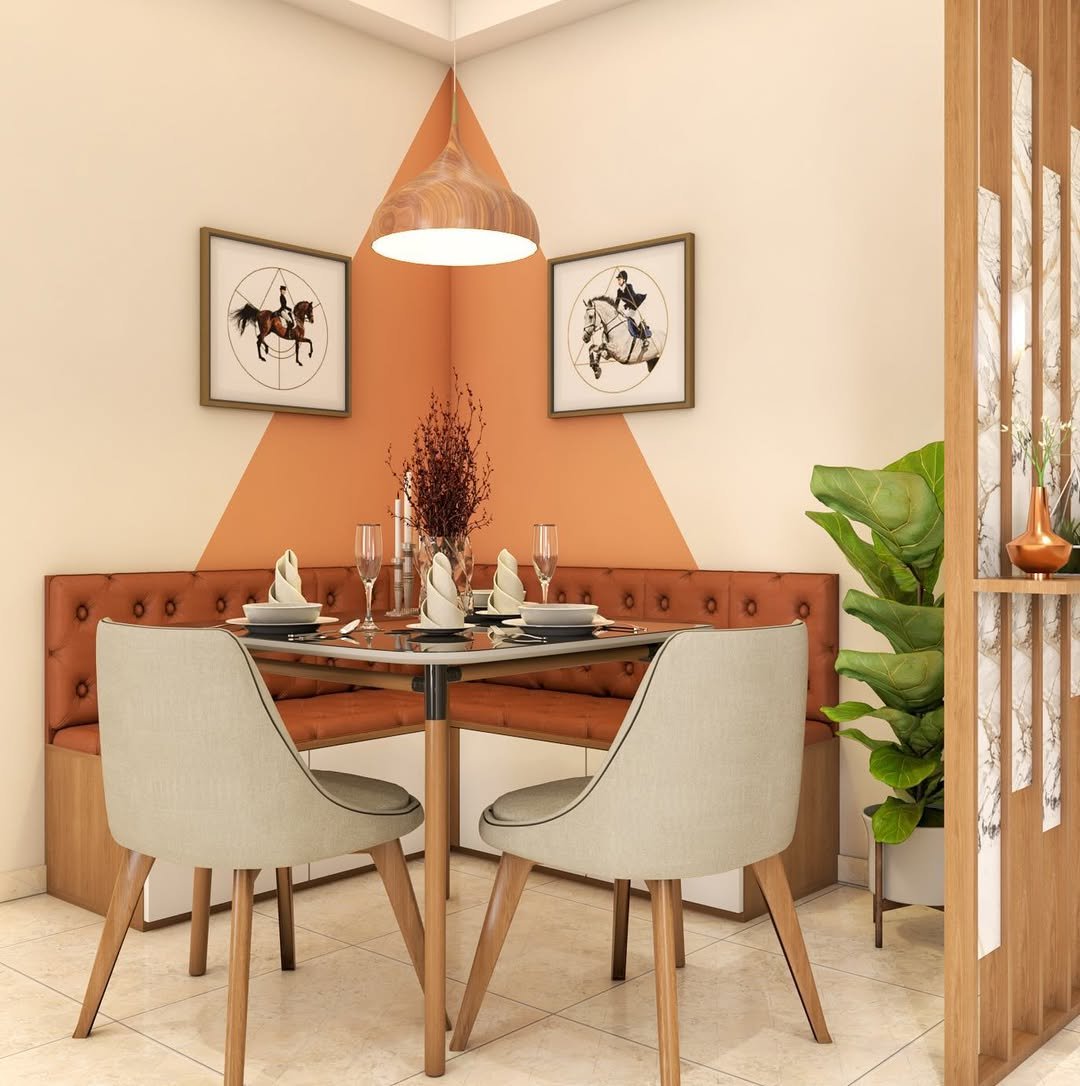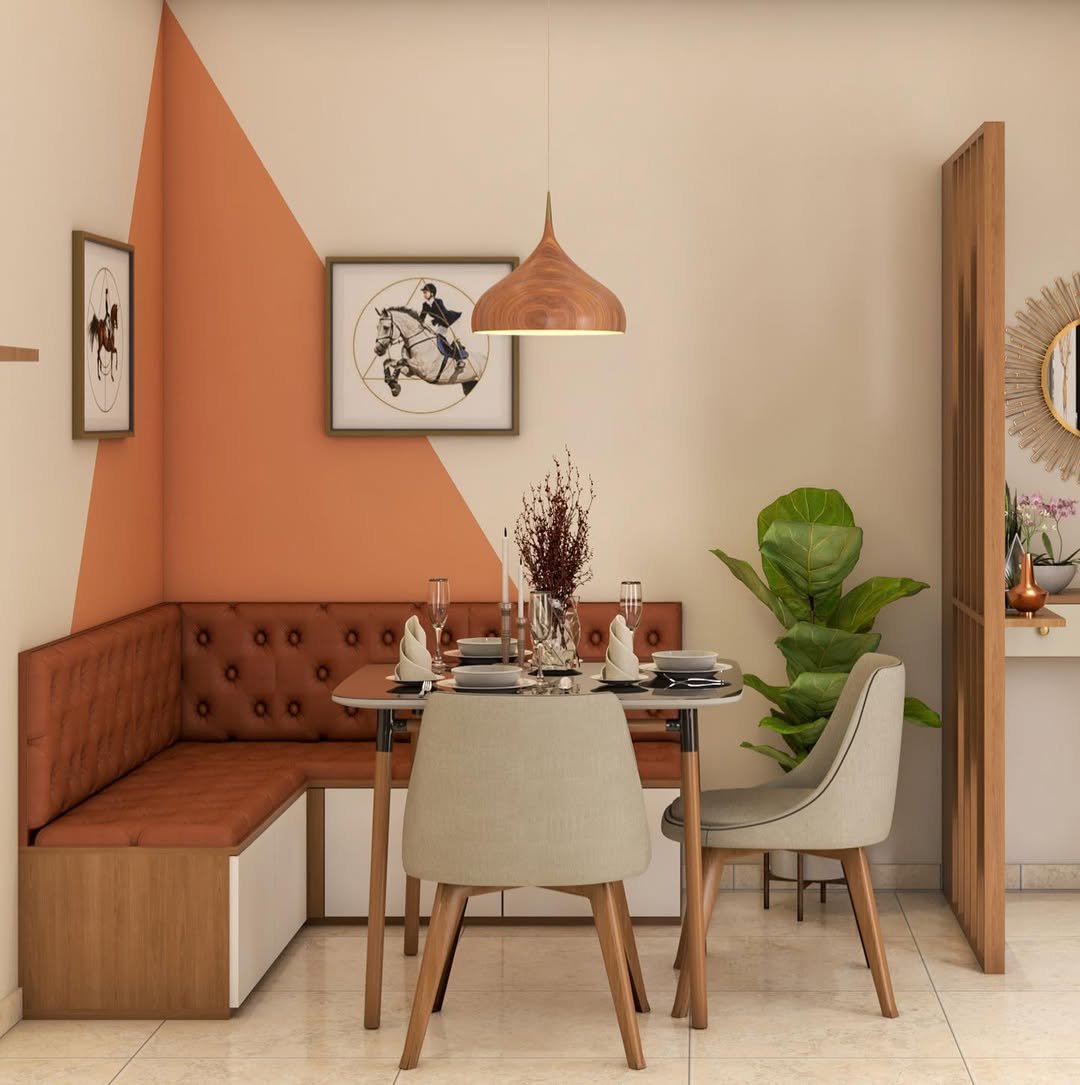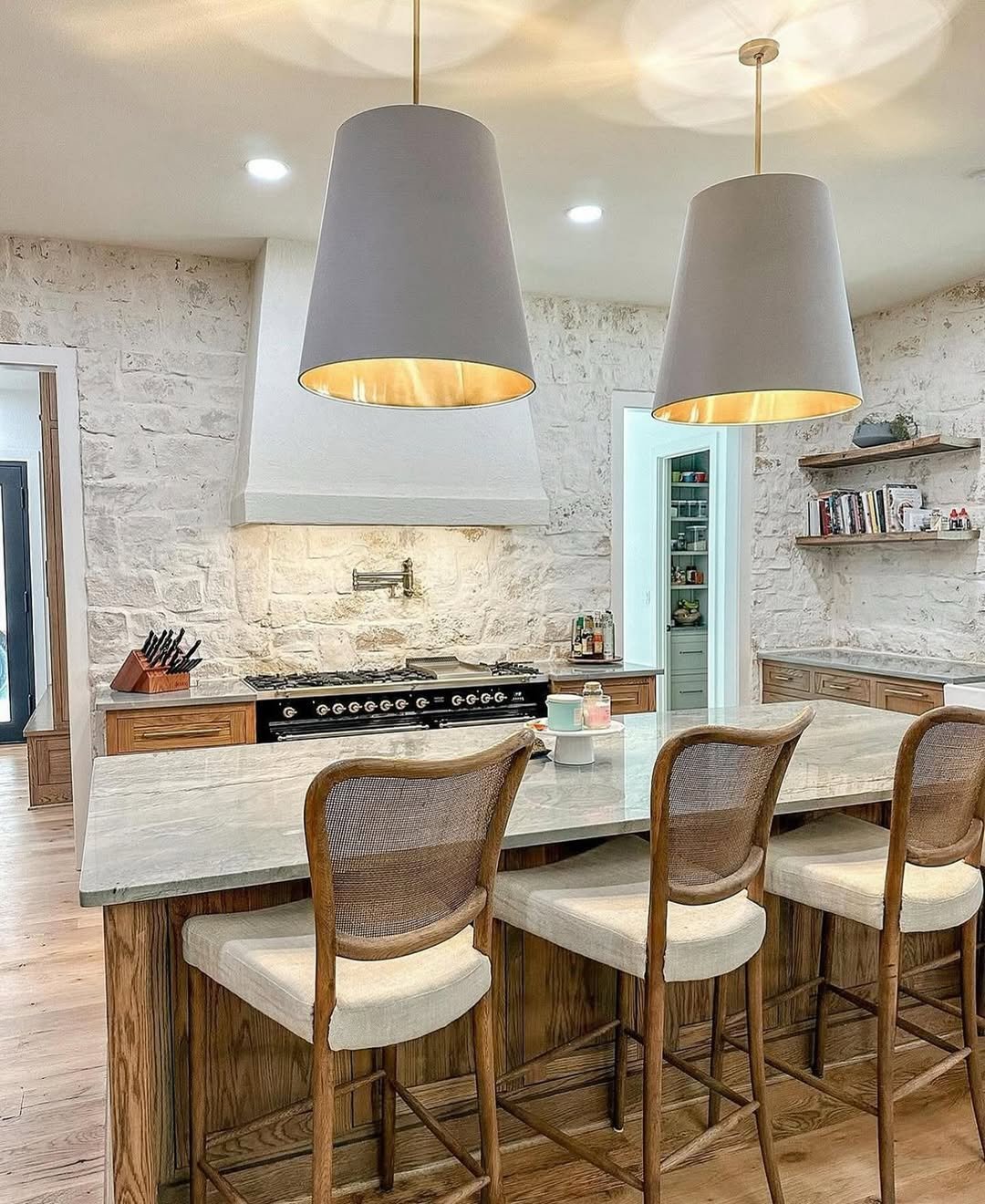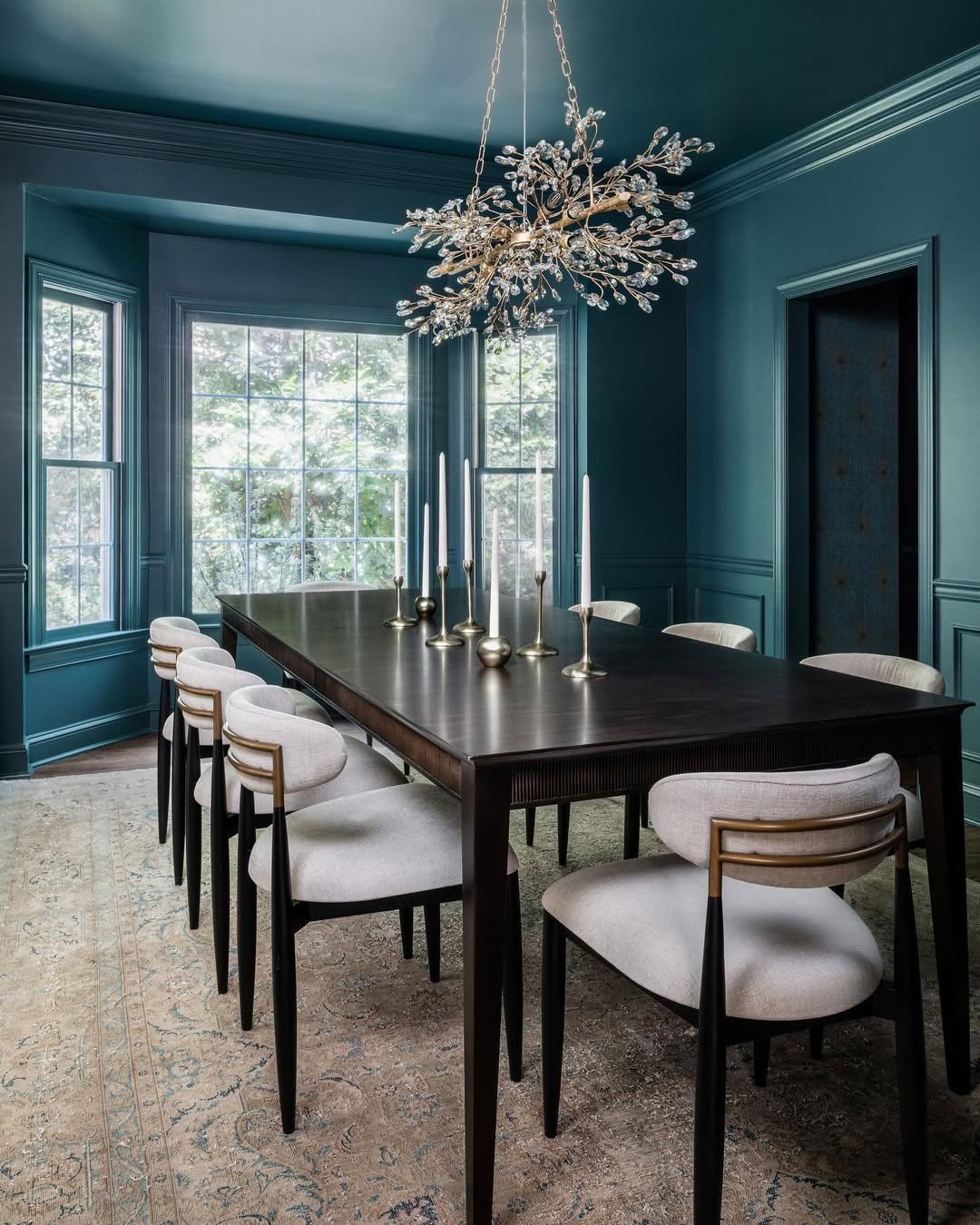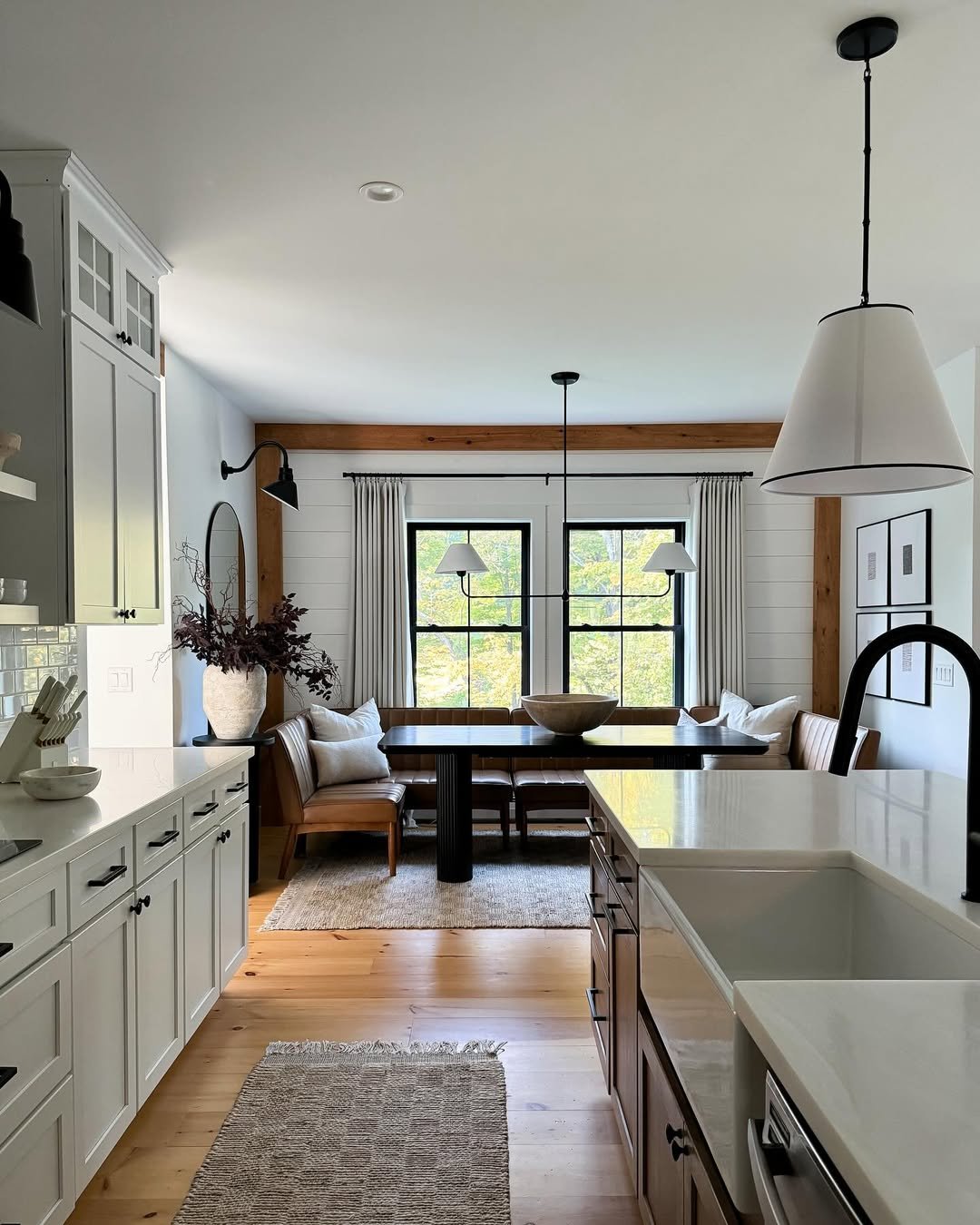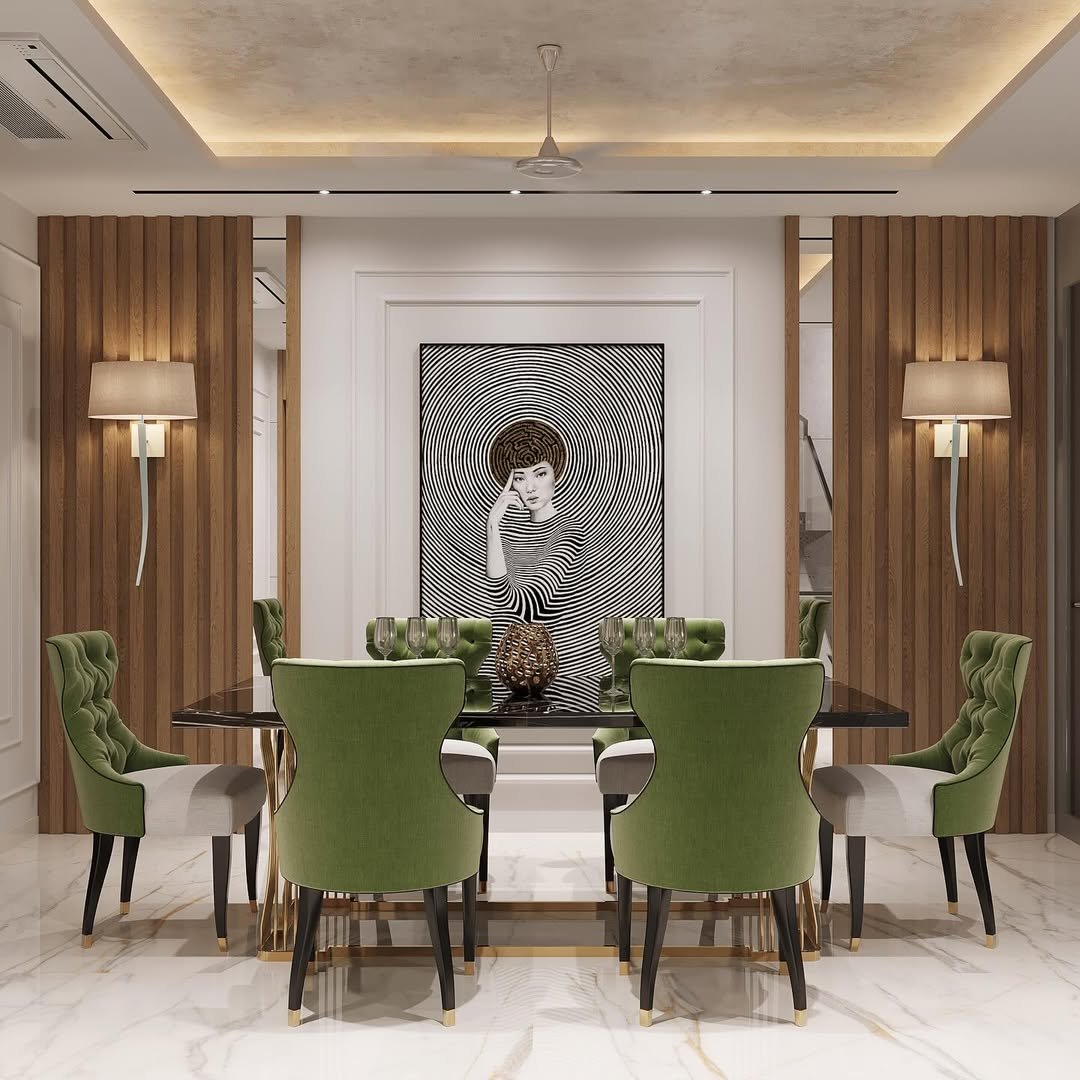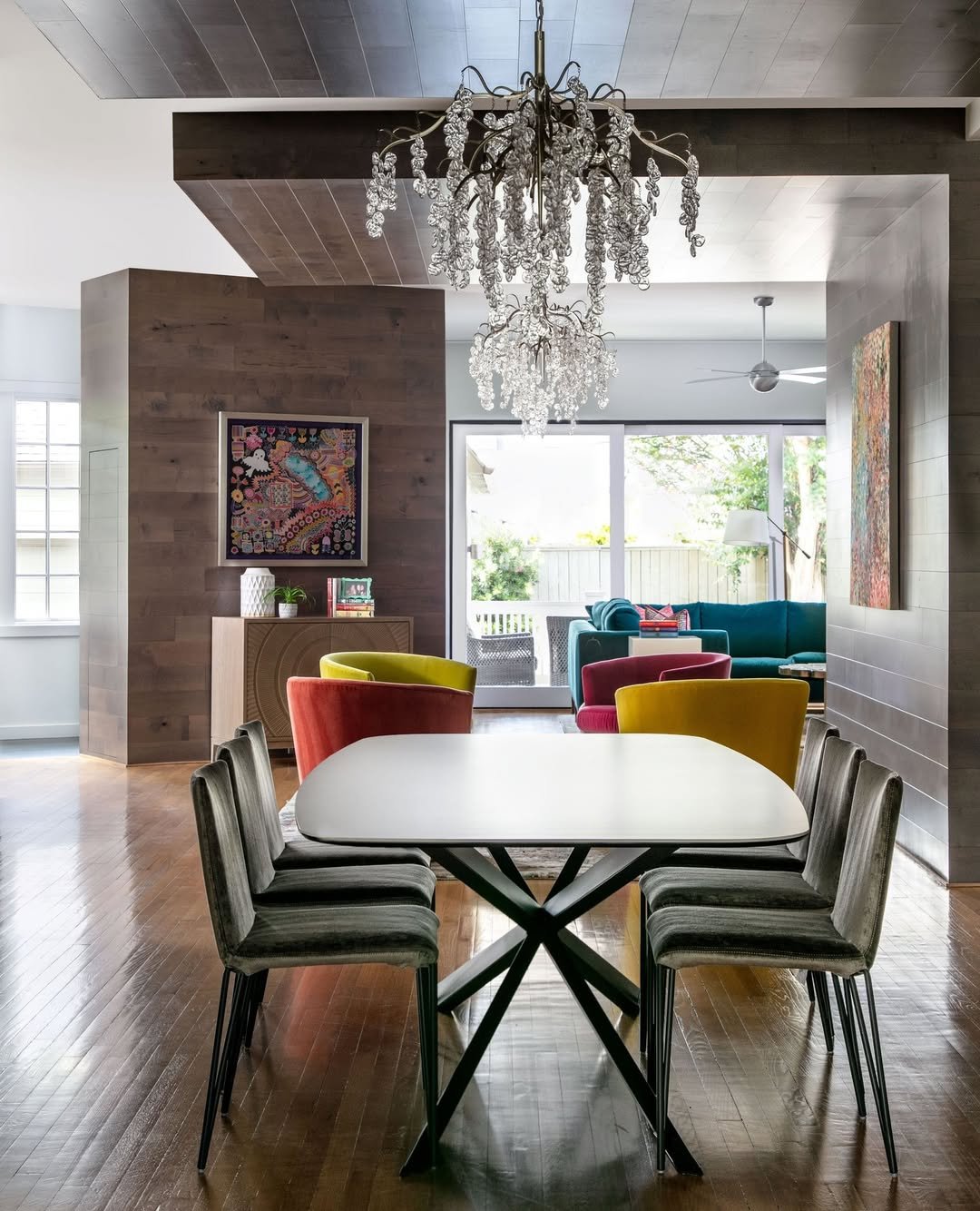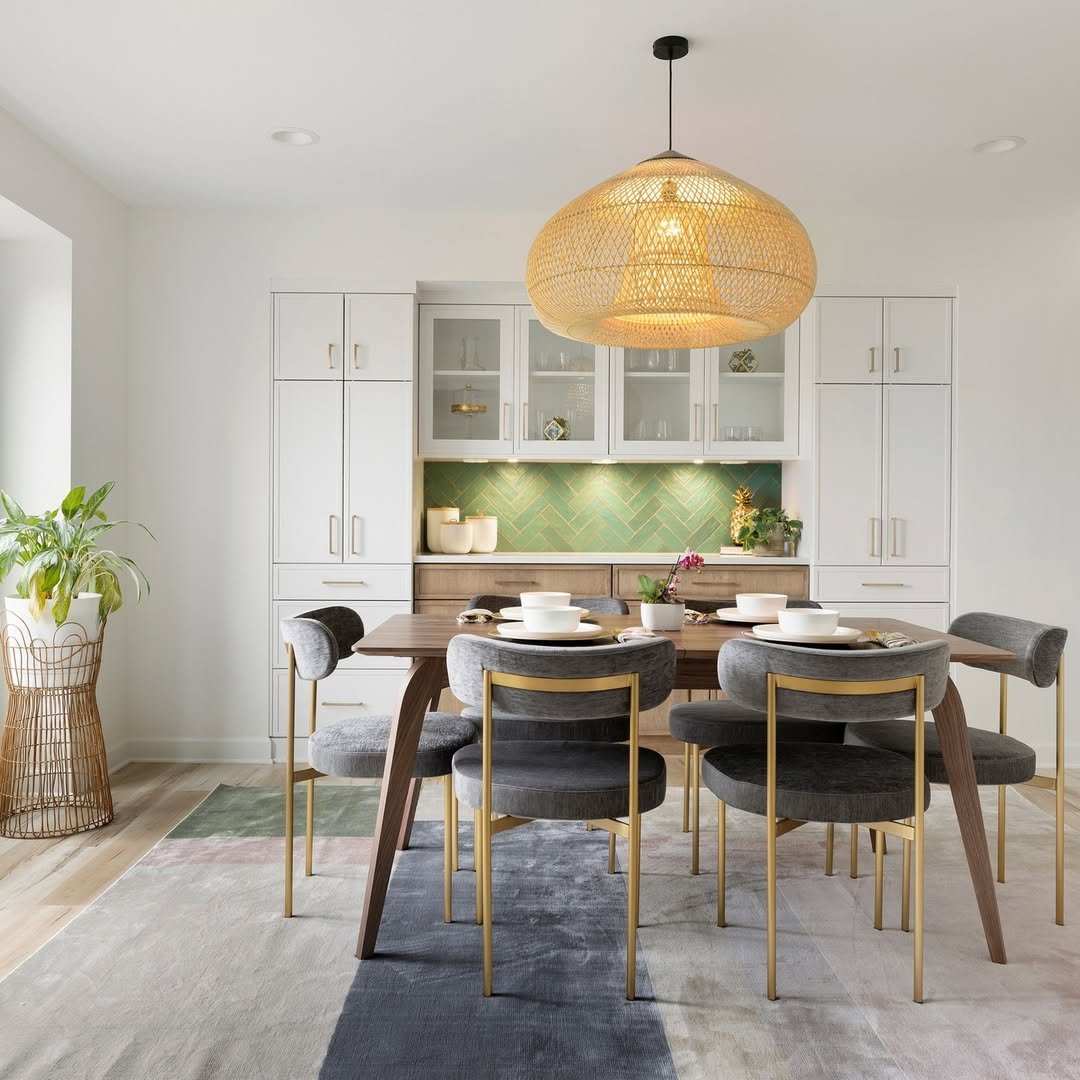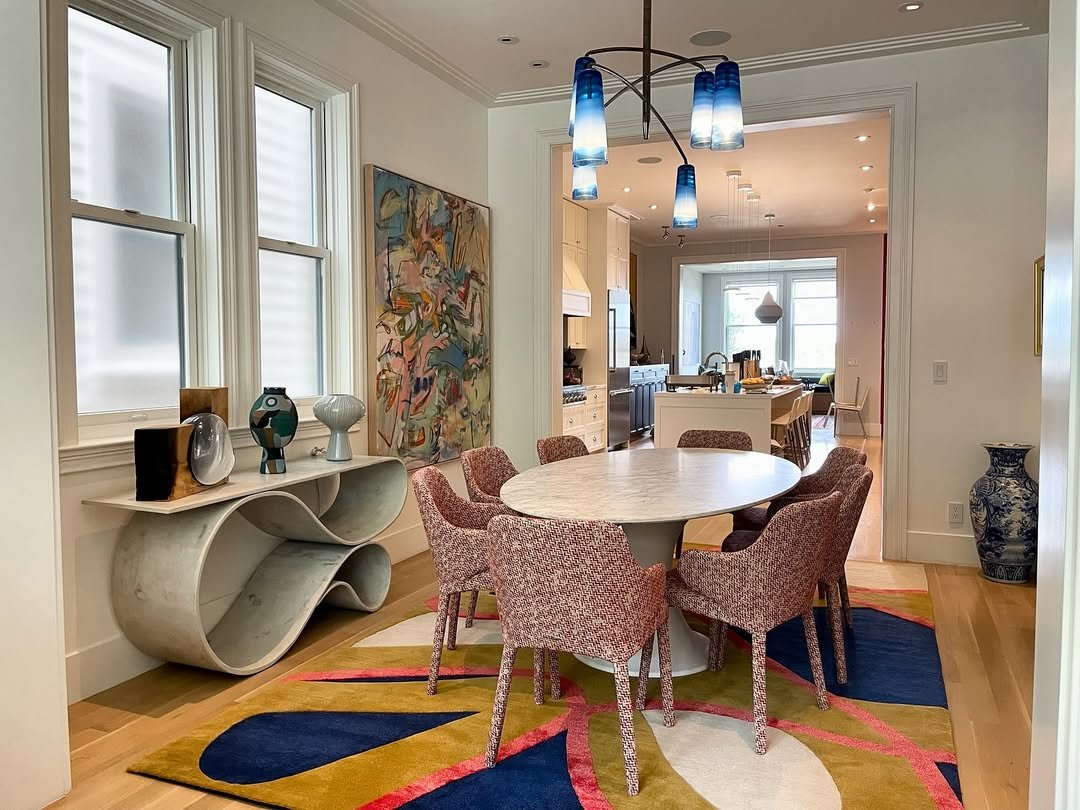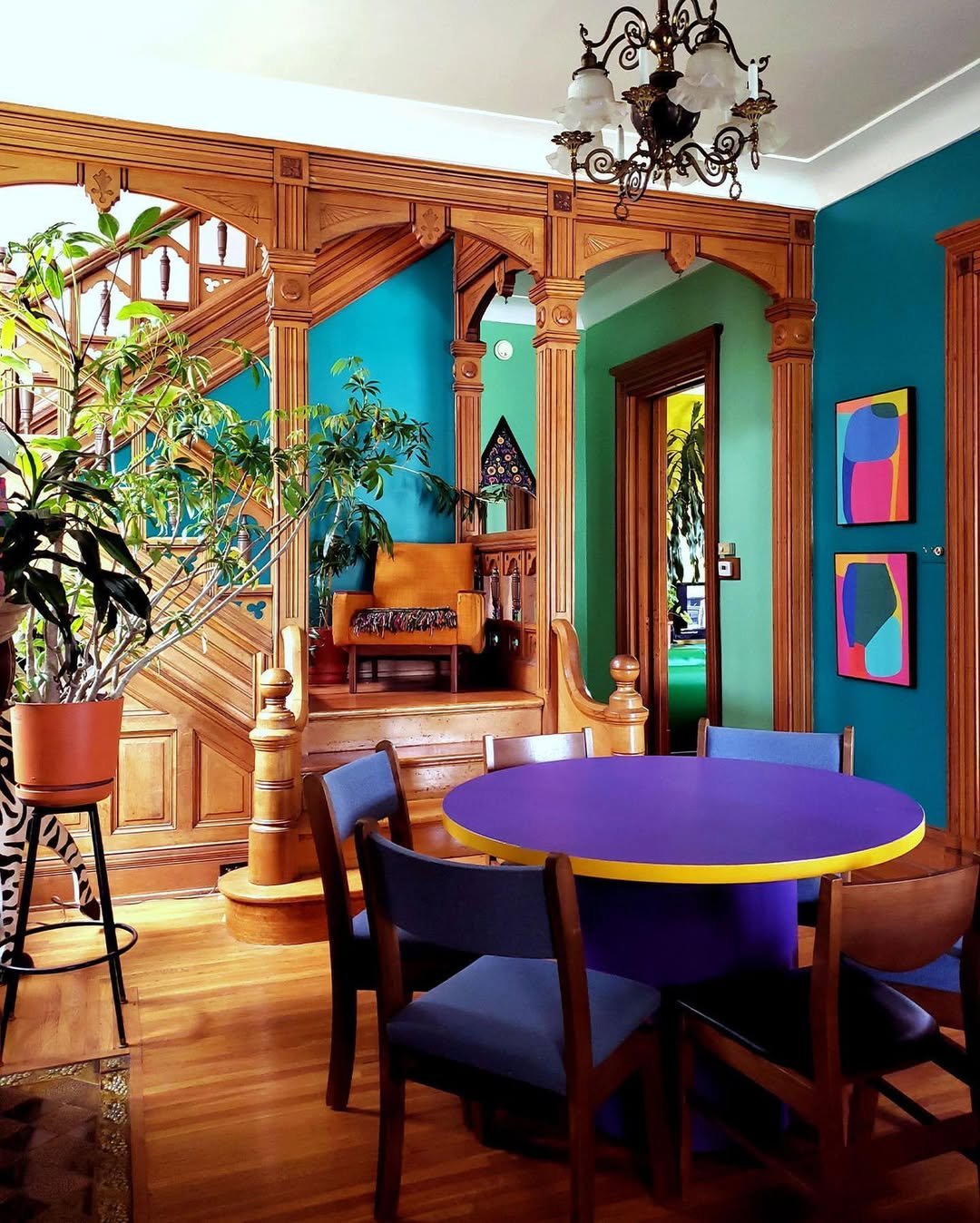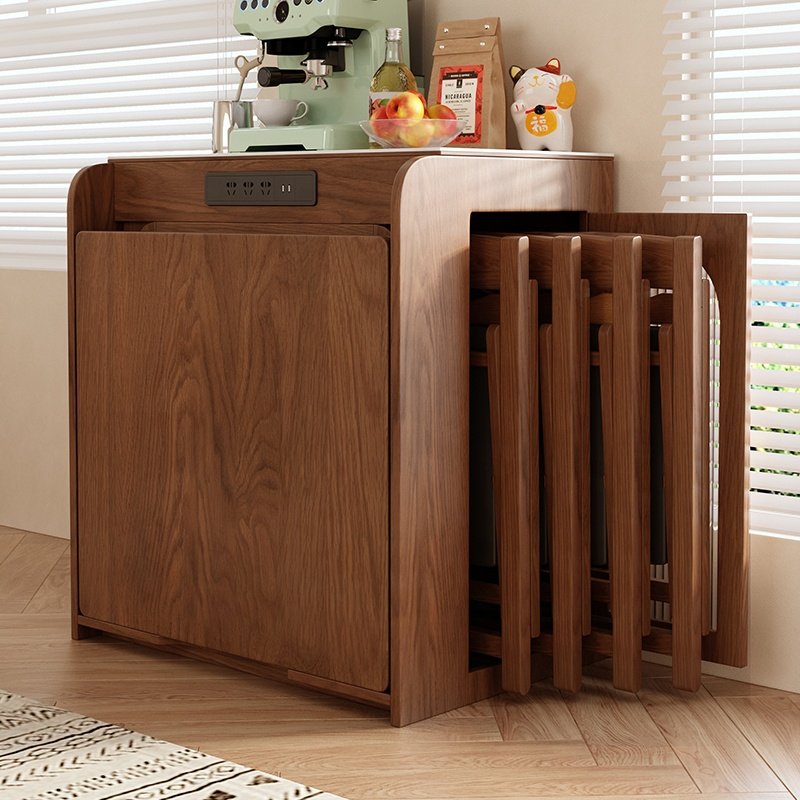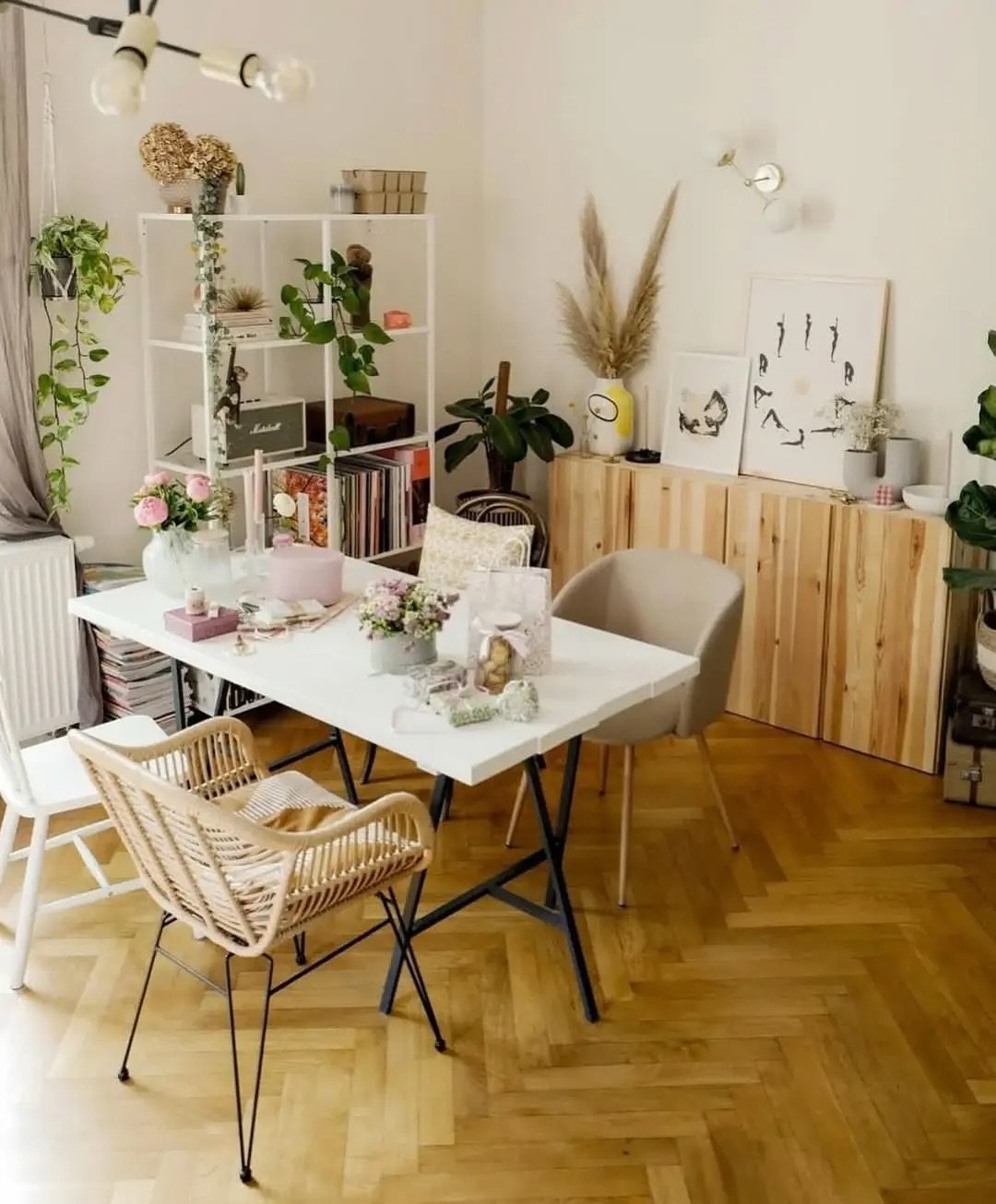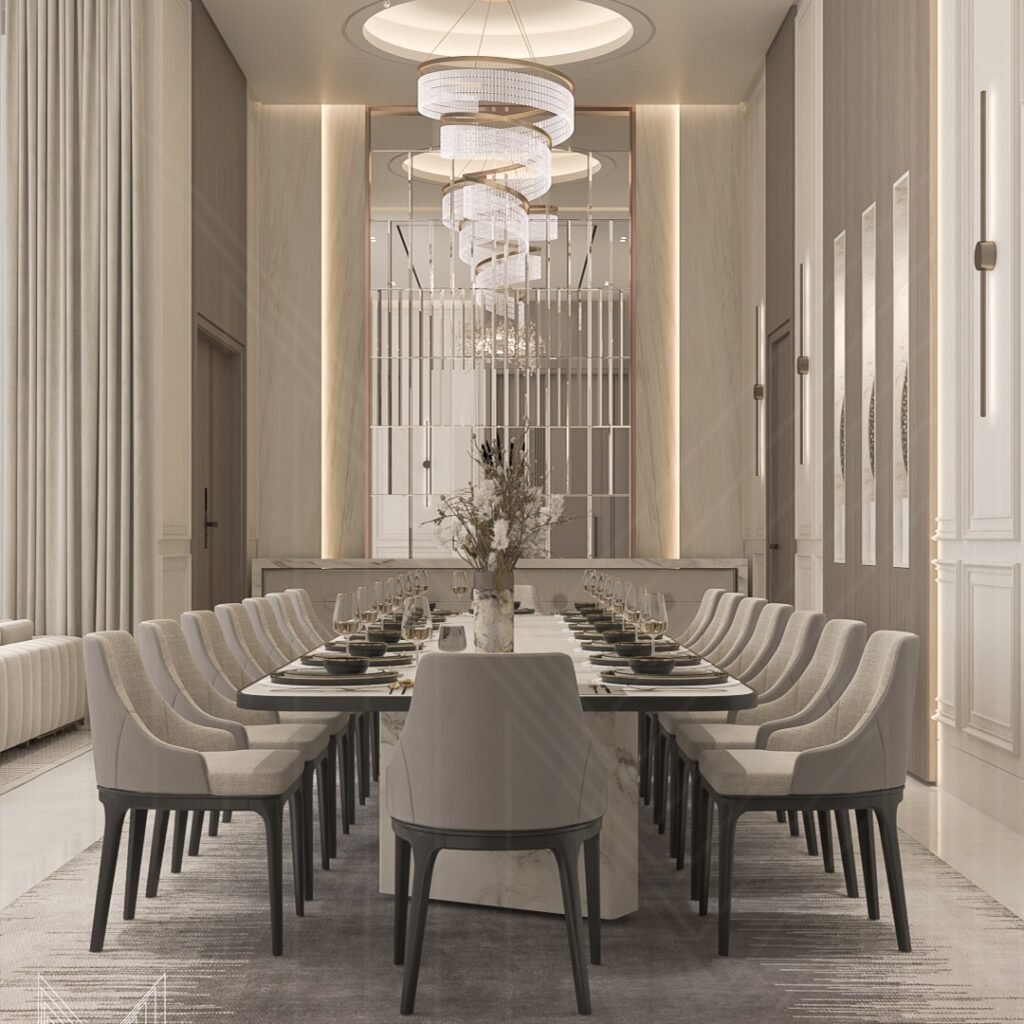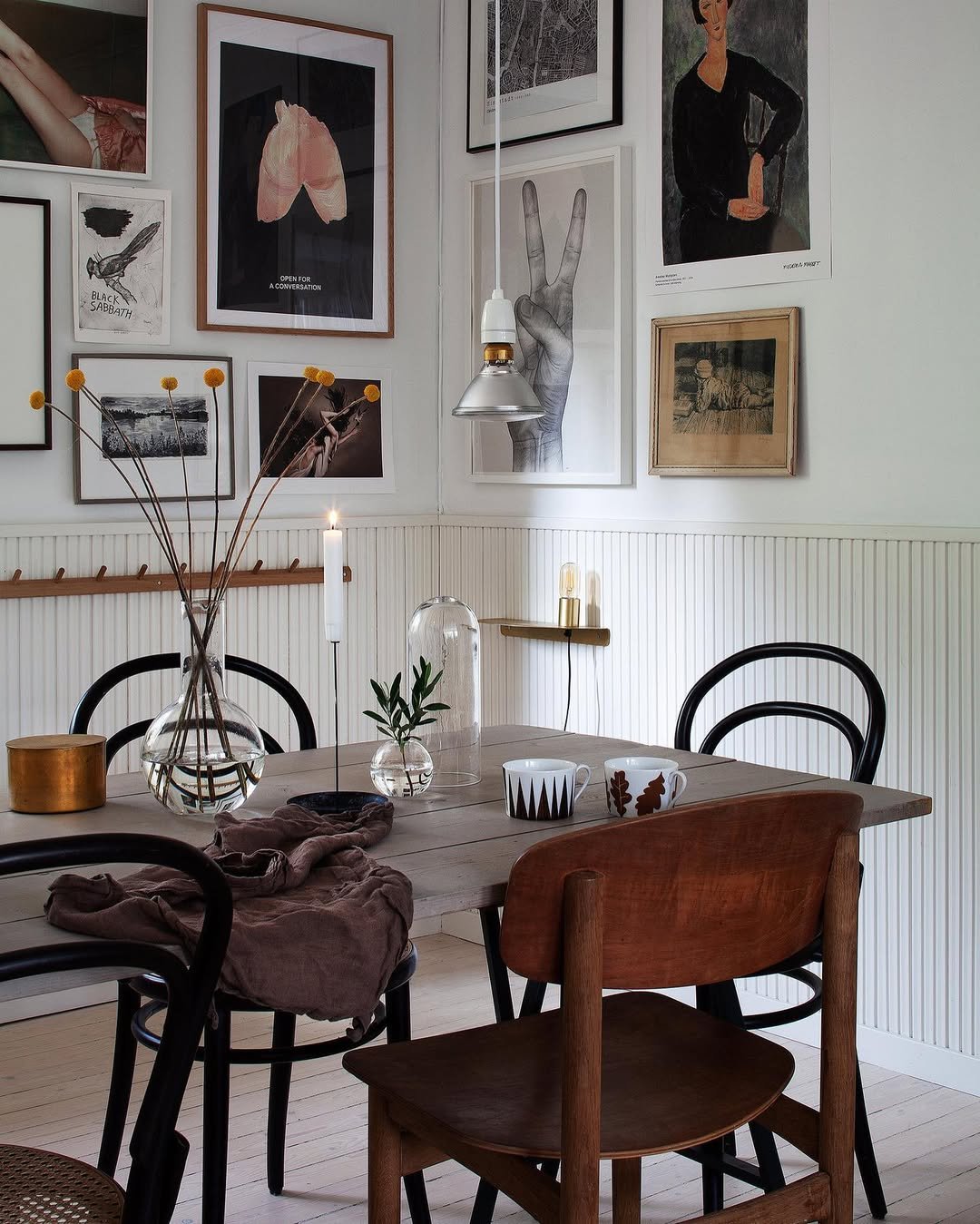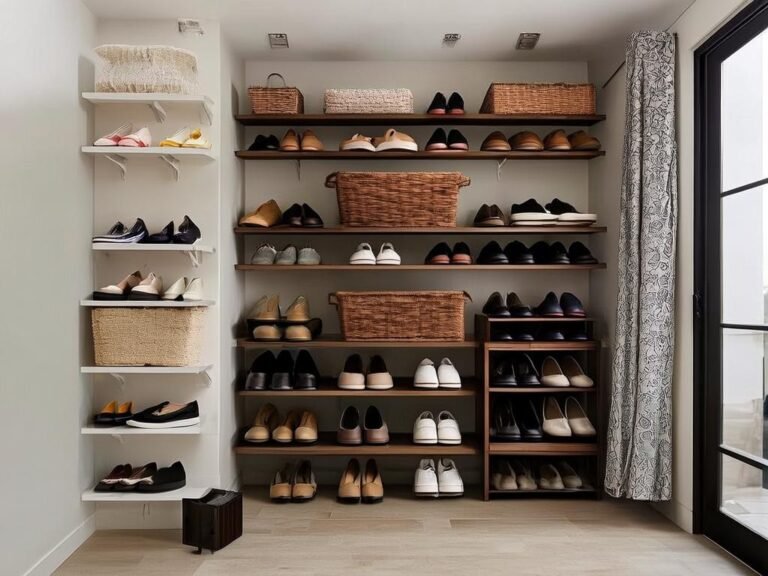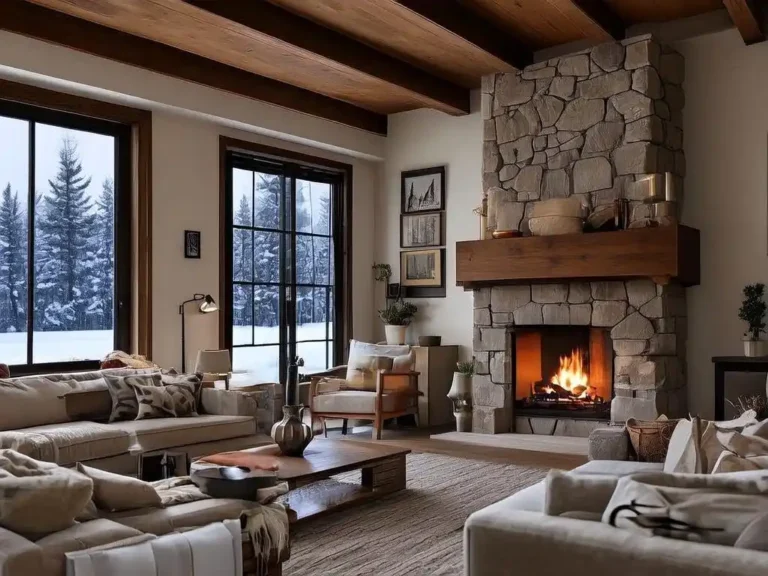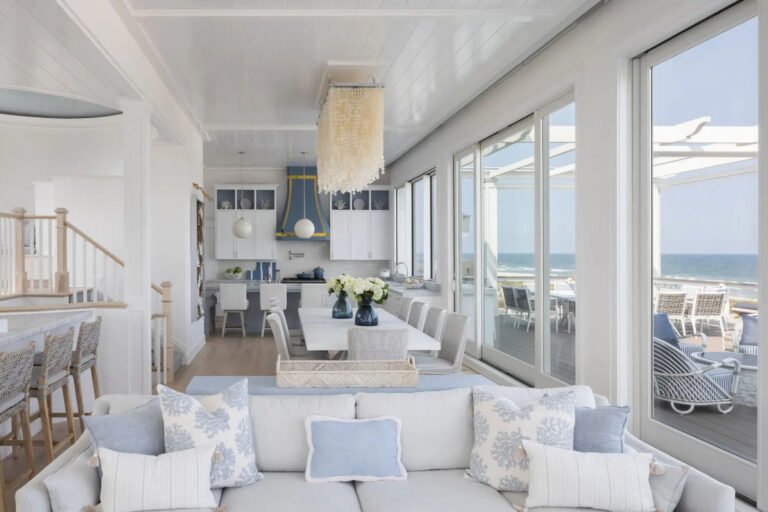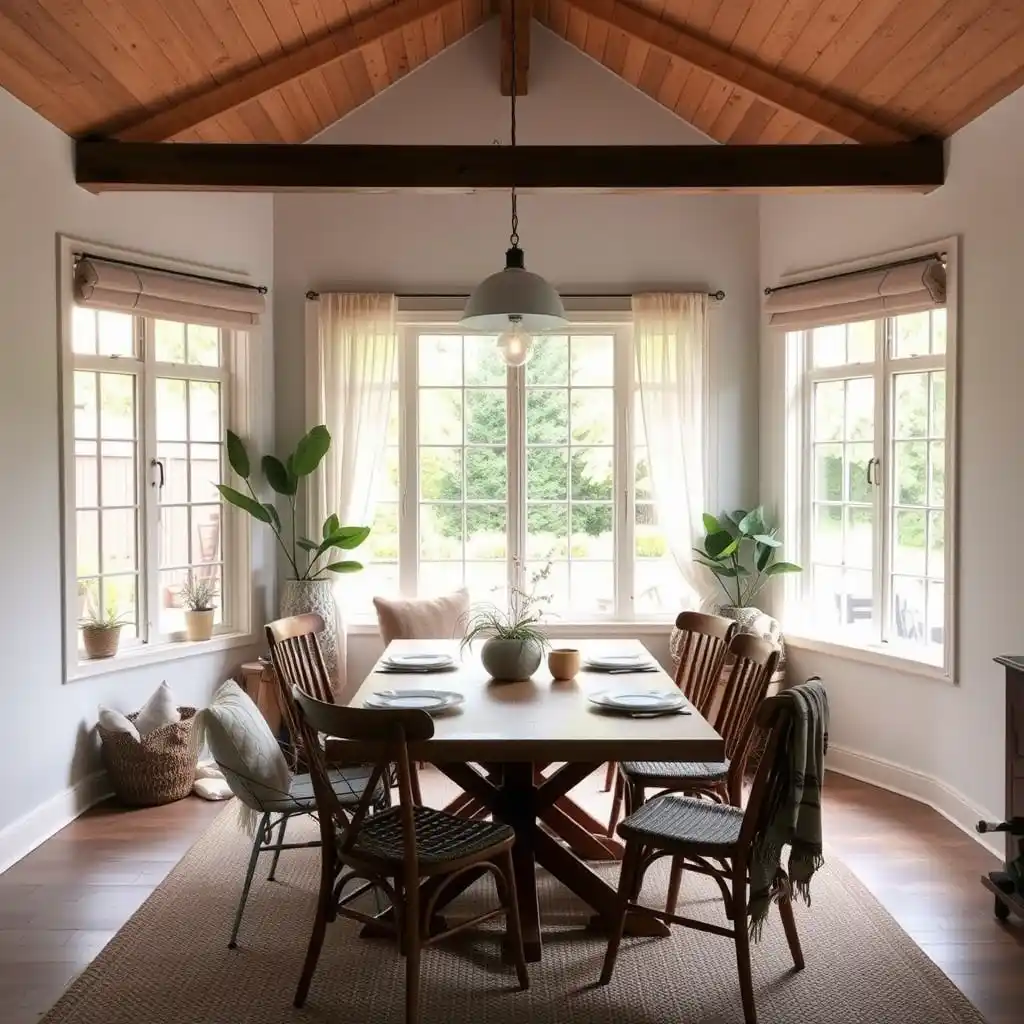
The dining area is more than just a place to eat—it’s where moments are shared, laughter echoes, and memories are made. Whether you’re hosting a family gathering or enjoying a quiet dinner, your dining space should reflect both your lifestyle and personal taste. With thoughtful design, any dining area—large or small, traditional or modern—can become the heart of your home. In this guide, we’ve curated over 30 stylish dining area ideas to inspire you to rethink your current setup. From space-saving solutions to luxurious finishes, these ideas are perfect for refreshing your dining experience. Discover new ways to combine functionality with beauty and see how even small changes in lighting, furniture, or layout can make a big impact. Whether you’re starting from scratch or just updating a few key elements, these ideas are tailored to help you create a space that feels welcoming, stylish, and unmistakably yours.
1. Embrace Minimalist Elegance
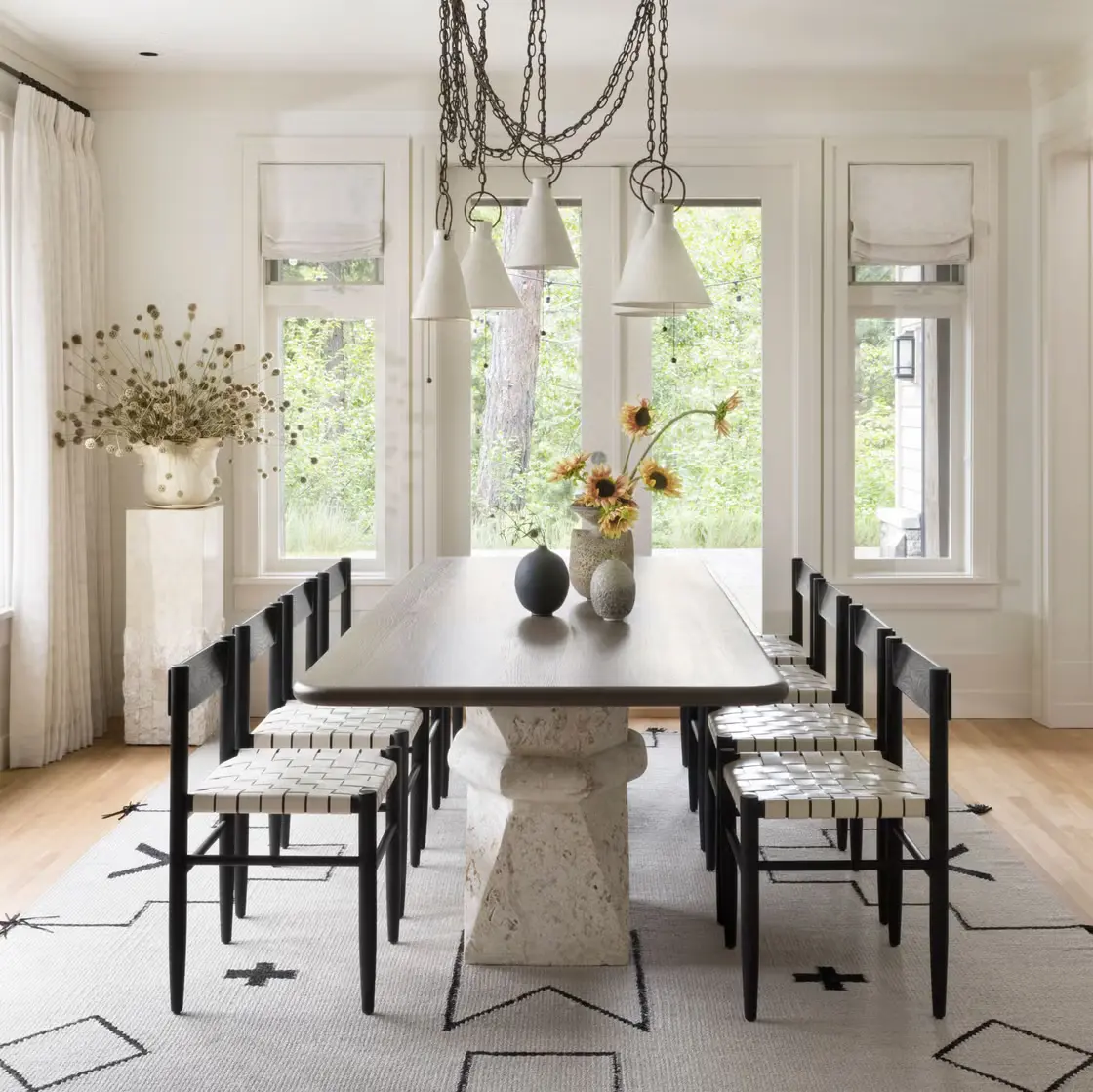
A minimalist dining area focuses on clean lines, simple furniture, and a clutter-free environment. Choose a sleek table with subtle finishes and pair it with chairs that emphasize form and function. Keep decor to a minimum to maintain a serene ambiance.
Use neutral tones like whites, beiges, and soft grays to enhance the minimalist aesthetic. Integrate texture through materials such as wood or linen for warmth and depth. Add a single focal piece, like a pendant light, to complete the refined look.
2. Add a Touch of Rustic Charm
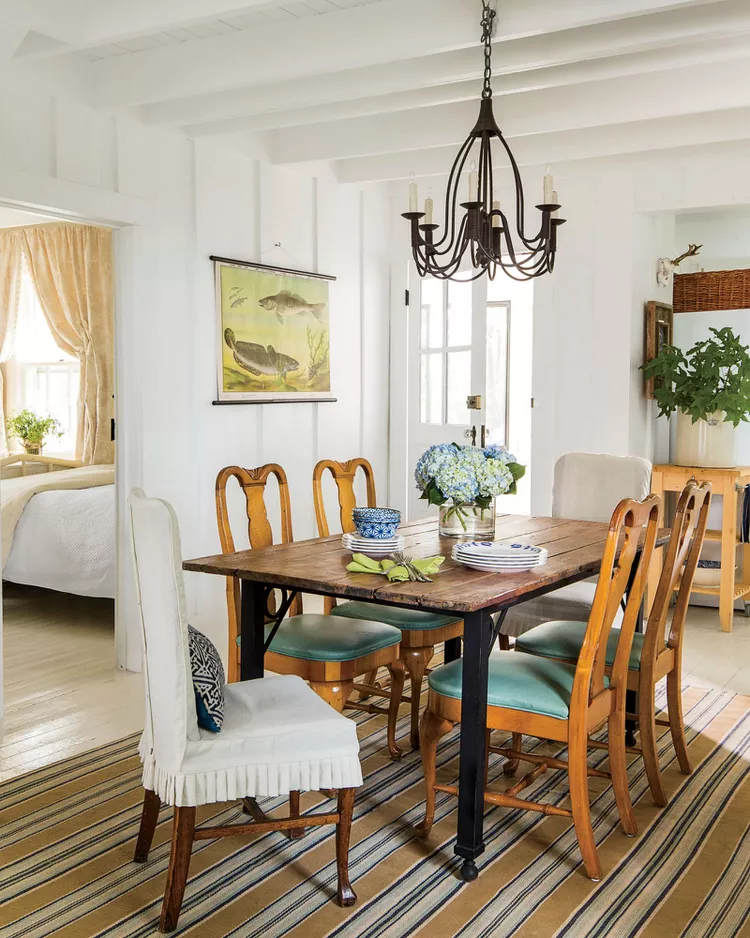
Rustic dining areas evoke comfort and tradition with distressed wood tables, antique accents, and cozy textures. Reclaimed wood furniture paired with woven placemats and vintage lighting can instantly create an inviting, farmhouse-style vibe.
Layer the space with warm earth tones, cozy throws, and nature-inspired decor to emphasize the rustic feel. Consider adding exposed beams or shiplap walls for extra charm that makes the room feel authentic and lived-in.
3. Opt for a Round Table
Round dining tables create an intimate setting ideal for conversation and connection. They work especially well in smaller spaces or square rooms where every inch matters. A pedestal base can also provide more legroom and flexibility with seating.
To enhance the aesthetic, choose a round table made from glass for a modern feel or solid wood for a timeless look. Accentuate with a circular rug and centered lighting to unify the space and make the table the focal point.
4. Incorporate Bench Seating
Benches are a practical and stylish way to increase seating in a dining area. They can tuck neatly under the table, save space, and bring a casual, relaxed feel to the room. Use them on one or both sides of the table for a balanced look.
Opt for upholstered benches to add comfort and texture, or go for rustic wood for a more natural style. Benches can also be a great match for open-concept spaces where visual continuity and flexibility are important.
5. Light It Up with Statement Fixtures
Lighting plays a crucial role in setting the mood in your dining area. A bold chandelier or modern pendant light can become the centerpiece of the room, adding both function and flair. Choose a fixture that complements your style and scale of the space.
Consider dimmable lighting to adjust ambiance based on the occasion. Layer with sconces or floor lamps for added warmth and depth. Proper lighting not only enhances decor but also elevates the overall dining experience.
6. Use a Bold Accent Wall
An accent wall can dramatically transform your dining space without overwhelming it. Choose a bold color, patterned wallpaper, or textured material like brick or wood to make one wall stand out. This adds character and a sense of personality.
Balance the rest of the room with neutral tones so the accent wall remains the focal point. You can also highlight the wall further by adding art, a mirror, or floating shelves that tie into the overall decor theme.
7. Blend the Indoors and Outdoors
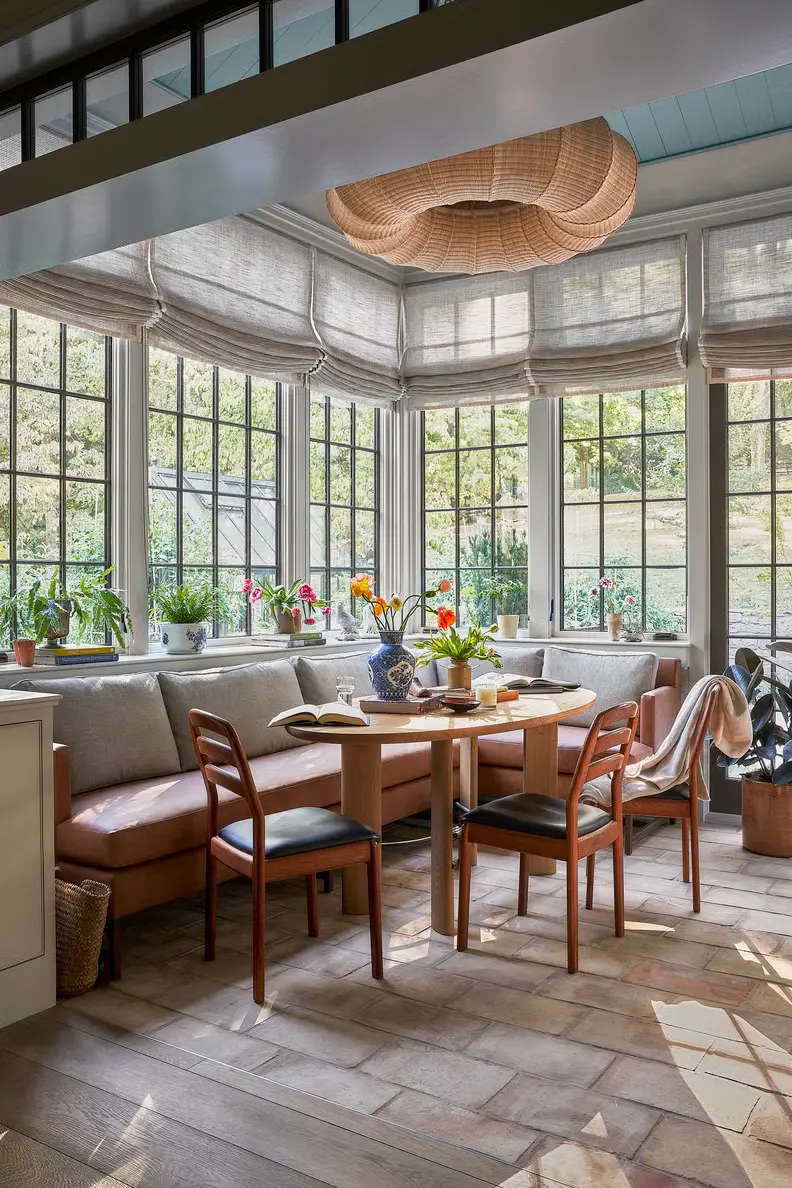
Bring the outdoors in by incorporating natural elements like potted plants, wood textures, and large windows that invite sunlight. Dining areas with views of greenery or access to patios create a refreshing, open-air dining vibe year-round.
Use sliding or French doors to create a seamless transition between indoor and outdoor areas. Add botanical-themed decor or even a living wall to enhance the organic feel and promote a calming environment for meals.
8. Try a Banquette Setup
Banquette seating is perfect for maximizing space in small or awkward corners. Built-in benches along one or more walls paired with a slim table can turn tight areas into cozy dining nooks. Add plush cushions for comfort and style.
This arrangement works well in open kitchens or apartments where space is limited. Customize your banquette with under-seat storage, contrasting upholstery, or statement lighting to add both function and flair.
9. Mix and Match Chair Styles

Break the rules of uniformity by mixing different chair styles around your dining table. Combine modern and vintage, wooden and upholstered, or even colorful and neutral for a curated, eclectic look that feels intentional.
To maintain harmony, ensure there’s a common thread such as color, material, or shape that ties the chairs together. This approach adds visual interest and allows for a more personalized and dynamic dining space.
10. Layer with Rugs
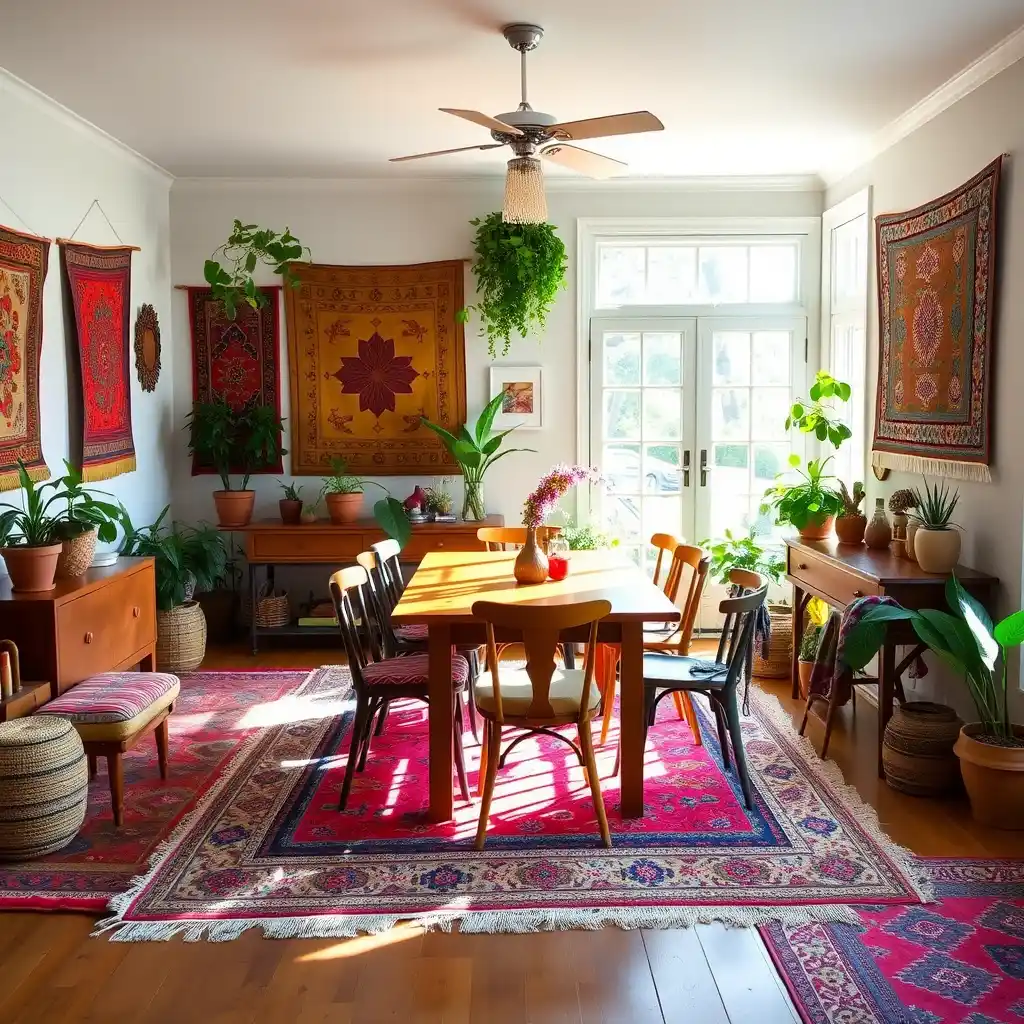
A rug under the dining table helps define the space and adds comfort underfoot. Choose a material that’s easy to clean, especially if meals can get messy. Rugs can introduce texture, color, and pattern that pull the room together.
Make sure the rug is large enough so chairs remain on it even when pulled out. Patterns like geometrics, stripes, or distressed styles work well to hide minor spills while enhancing the visual depth of the room.
11. Play with Monochrome Tones

A monochrome color scheme can lend a modern, cohesive look to your dining area. Shades of white, gray, or black create a sleek visual flow that feels sophisticated and contemporary. Use different textures and materials to avoid a flat appearance.
Combine matte and glossy finishes or mix metal, leather, and textiles to add visual interest. A black dining table paired with white chairs, or vice versa, can make a bold style statement without overwhelming the room.
Latest Articles
- Small Baddie Bedroom Ideas – Transform Your Tiny Space into a Trendy Vibe Zone
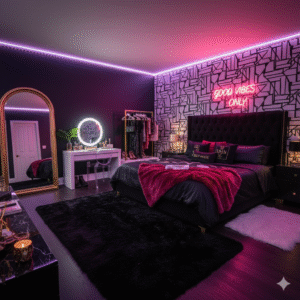
- 18 Round Coffee Table Living Room Ideas That Soften Your Space

- Attractive Dark Feminine Bedroom Ideas That Balance Drama with Elegance

12. Showcase Wall Art
Elevate your dining area with curated wall art that reflects your personality and ties into the room’s theme. Whether it’s abstract pieces, framed photography, or a gallery wall, art can become a conversation starter at the dining table.
Choose artwork in colors that complement your decor, and consider large-scale pieces for maximum impact. A well-lit art piece can also serve as a secondary focal point alongside your dining table.
13. Add a Bar Cart or Sideboard

Bar carts and sideboards not only offer extra storage but also bring an element of sophistication to the dining area. Use them to display drinkware, serve meals, or store dining essentials while keeping the space clutter-free.
Style your sideboard with vases, books, or a lamp for added charm. For bar carts, organize with decanters, glassware, and cocktail tools to turn your dining space into a versatile entertaining zone.
14. Incorporate Industrial Elements
Industrial style dining areas highlight raw materials like metal, exposed brick, and reclaimed wood. A sturdy industrial table paired with metal chairs or pendant lighting creates a strong yet stylish vibe.
Balance industrial elements with soft textiles, plants, or neutral walls to prevent the space from feeling too cold. This contrast adds warmth and makes the style feel more livable and welcoming.
15. Use Built-in Shelving
Built-in shelves add both function and aesthetic to a dining area. Use them to showcase dinnerware, books, plants, or decor items that reflect your style. Shelving draws the eye upward, making the room feel larger and more open.
Paint or stain the shelves to match your dining furniture, or use contrasting colors for a bolder look. Keep arrangements tidy and curated to avoid visual clutter and ensure everything feels intentional.
16. Choose Sculptural Furniture
Furniture with sculptural elements adds an artistic flair to your dining area. Look for tables with carved bases, chairs with fluid shapes, or unique light fixtures that act as functional decor.
Sculptural pieces work well in minimalist or modern dining spaces, acting as the statement feature. Balance these bold choices with understated surroundings to let the design shine without overwhelming the room.
17. Create a Cozy Corner
Turn an unused corner into a charming dining nook. A small round table, cushioned chairs, and ambient lighting can make even tight spaces feel inviting and functional. Add a plant or artwork to complete the scene.
This idea works well in open-plan homes or studio apartments. Keep it light and airy with bright colors or natural light to avoid a cramped feel and make the corner visually pop.
18. Embrace Open Shelving
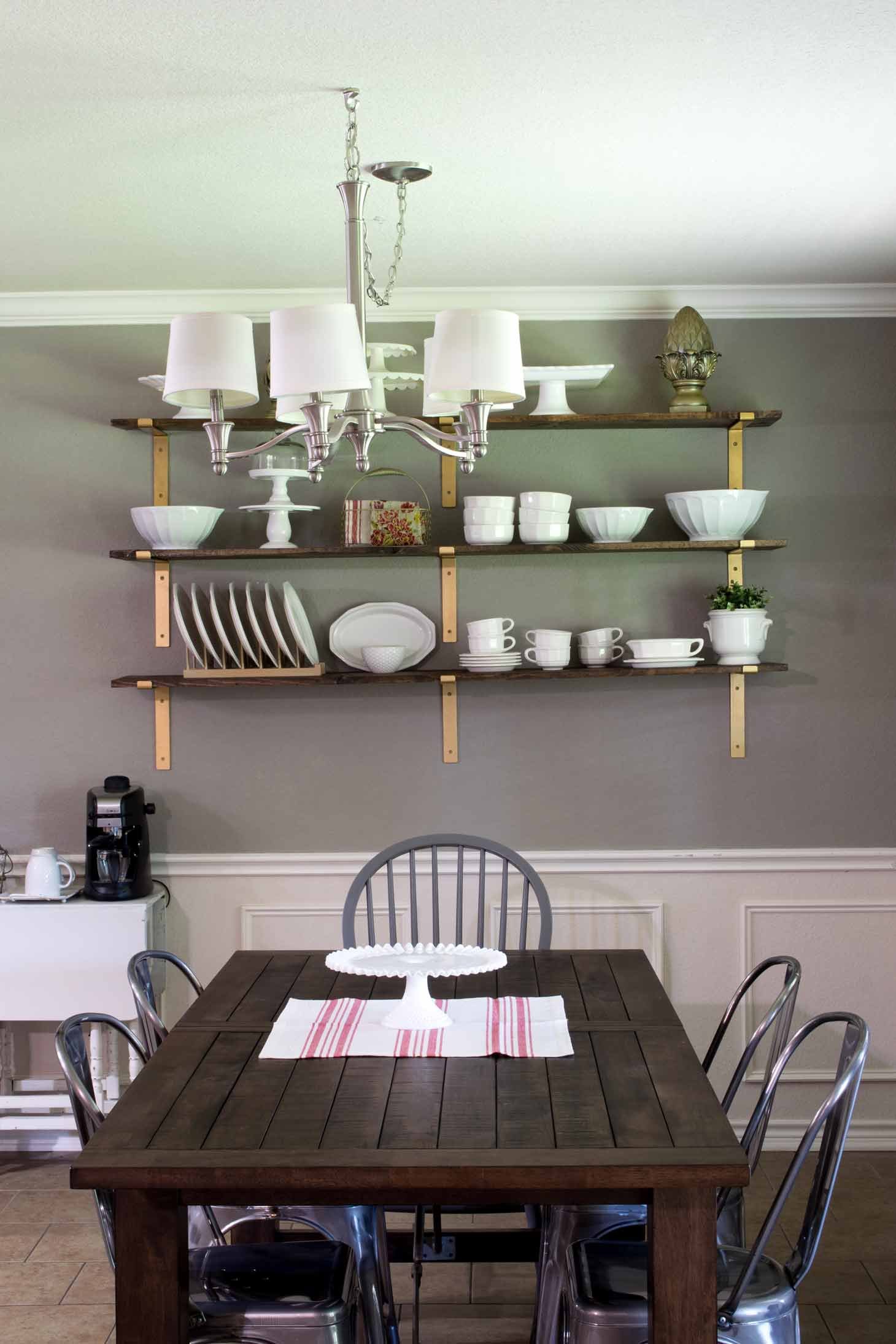
Open shelving in the dining room offers an easy way to display favorite dishes, glassware, or decor. It provides accessibility and encourages intentional styling that keeps the room feeling curated and personal.
Choose wood or metal shelves depending on your overall decor style. Keep items organized and color-coordinated for a cohesive look. Rotate seasonal items to keep the space feeling fresh year-round.
19. Design Around a Theme

A themed dining space—like coastal, vintage, boho, or Scandinavian—adds character and cohesiveness. Choose furniture, colors, and accessories that align with your chosen theme for a polished, curated look.
For example, a coastal theme may include driftwood accents, nautical prints, and airy fabrics. Keep it subtle and consistent to avoid going overboard and ensure your space feels stylish and intentional.
20. Highlight with Mirrors
Mirrors can enhance light and create the illusion of more space in your dining room. A large mirror or a series of smaller ones can reflect light, visually expand the room, and add a decorative touch.
Place mirrors strategically across from windows or lighting fixtures to maximize their effect. Choose frames that match your decor style—be it ornate, minimalist, or rustic—for a cohesive and stylish result.
21. Bring in Pops of Color
Incorporate pops of color through dining chairs, tableware, or wall art to energize your space. Bold hues like teal, mustard, or coral can inject personality and break up neutral palettes, adding a lively and modern touch.
Keep the balance by choosing one or two focal points for color while maintaining a neutral backdrop. Coordinated accessories like napkins, cushions, or vases help tie everything together for a cohesive yet playful look.
22. Opt for Foldable Furniture
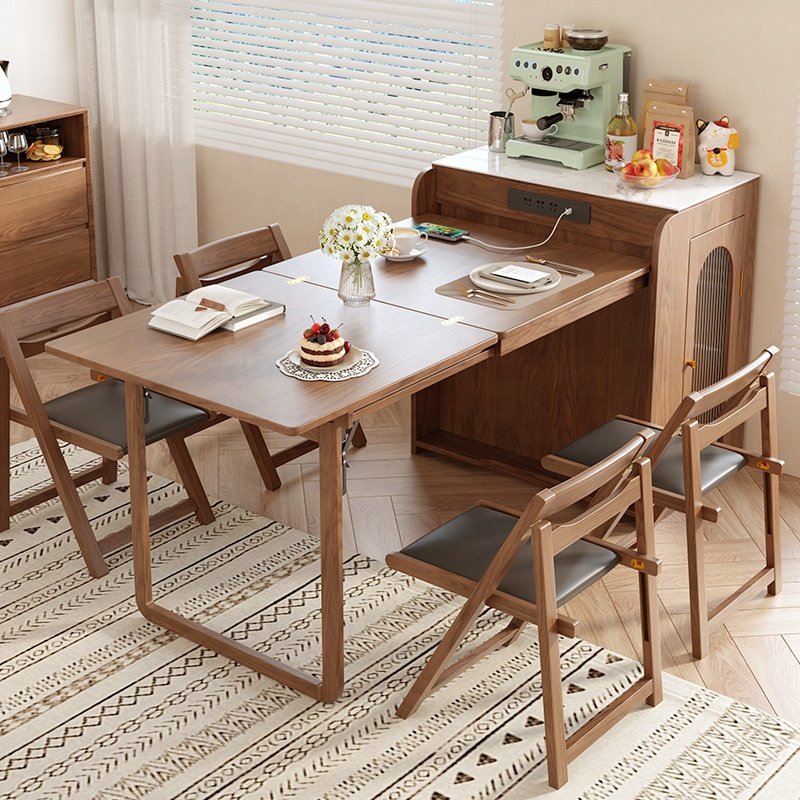
Foldable or extendable furniture is ideal for multi-purpose dining areas or smaller homes. Tables and chairs that can be tucked away offer flexibility and allow the space to adapt easily to different needs and occasions.
Look for stylish foldable options that don’t compromise on design. Materials like bamboo or metal add a modern edge while being practical and space-saving, making them a smart investment for versatile living.
23. Highlight Architectural Features
Use your dining area’s architectural elements—like archways, moldings, or built-in niches—to your advantage. Highlight them with contrasting paint, lighting, or decor to draw attention and create visual interest.
These unique features can act as natural focal points. Emphasize their charm by integrating complementary furniture or artwork that celebrates the room’s original character.
24. Try a Two-Tone Color Scheme
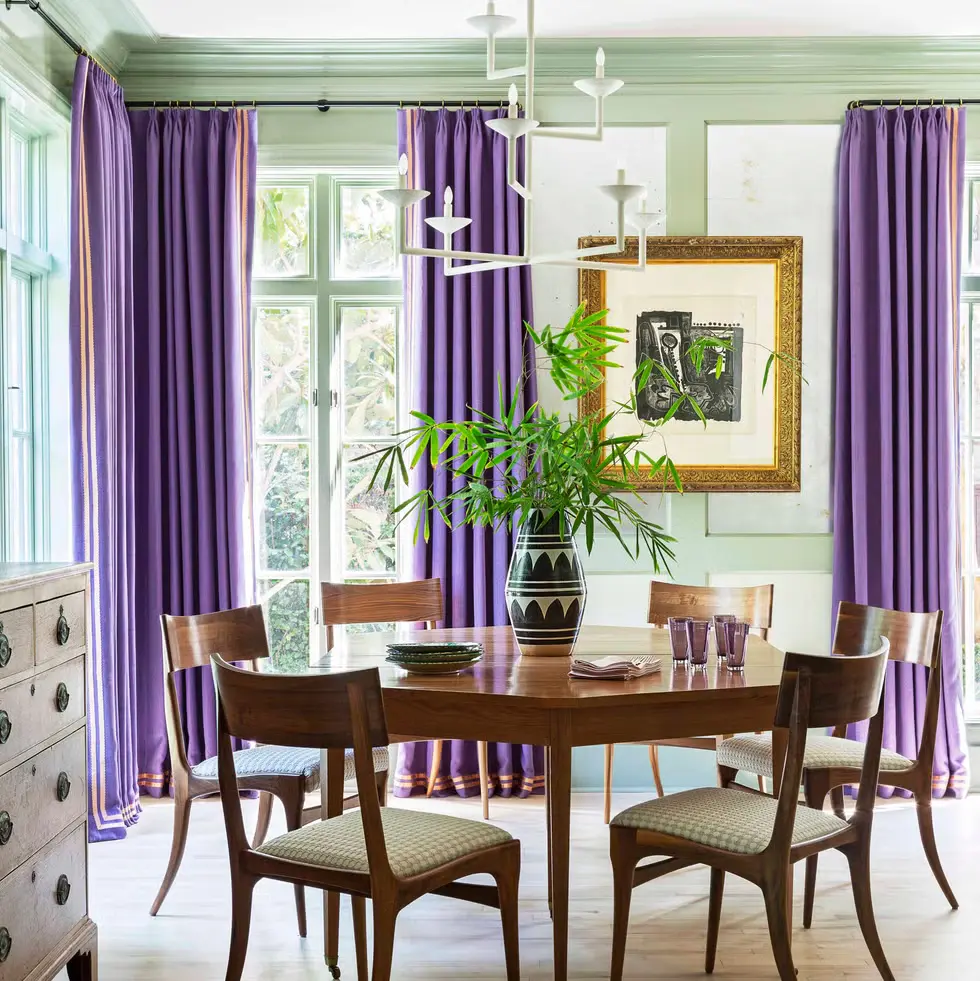
A two-tone color scheme adds dimension and style to a dining space. Combine dark and light shades—like navy and white or charcoal and beige—for a balanced yet dynamic look that feels intentional and refined.
Use contrasting tones on walls, furniture, or textiles. This design choice works well in both modern and traditional spaces and adds a designer touch without overwhelming the room.
25. Showcase a Unique Centerpiece
A stunning centerpiece can anchor your dining table and set the tone for the entire room. Whether it’s a sculptural vase, a seasonal arrangement, or a handmade bowl, choose something that reflects your style.
Change centerpieces throughout the year to keep things fresh and festive. A rotating centerpiece also allows you to play with textures, colors, and themes without a full redesign.
26. Use Transparent Furniture

Transparent furniture like acrylic chairs or glass tables helps make a space feel open and airy. This is especially helpful in small or dark dining rooms where bulky pieces can feel overwhelming.
Pair transparent items with textured textiles or wood accents to add depth and warmth. This approach blends functionality with a chic, modern look.
27. Add Texture with Natural Materials
Incorporate natural materials like rattan, jute, leather, or reclaimed wood to add texture and warmth. These materials ground the space and introduce a relaxed, organic vibe that’s both timeless and trendy.
Layer materials for a richer look—think a wooden table with a rattan pendant and linen tablecloth. The varied textures create depth and make the dining area feel cozy and lived-in.
28. Frame the Space with Curtains
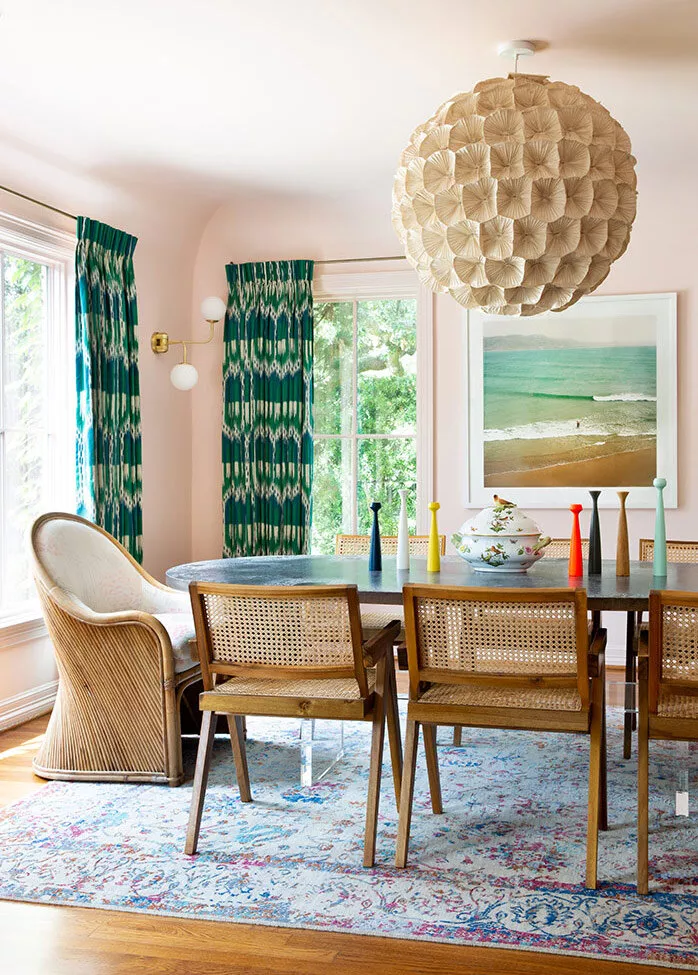
Window treatments like floor-length curtains or Roman shades can frame your dining area beautifully. They not only add softness and color but also help control natural light for a comfortable dining atmosphere.
Choose fabrics that match your overall theme—velvet for luxe, linen for breezy, or patterns for bold flair. Properly hung curtains also enhance the height and elegance of the room.
29. Add Personal Touches
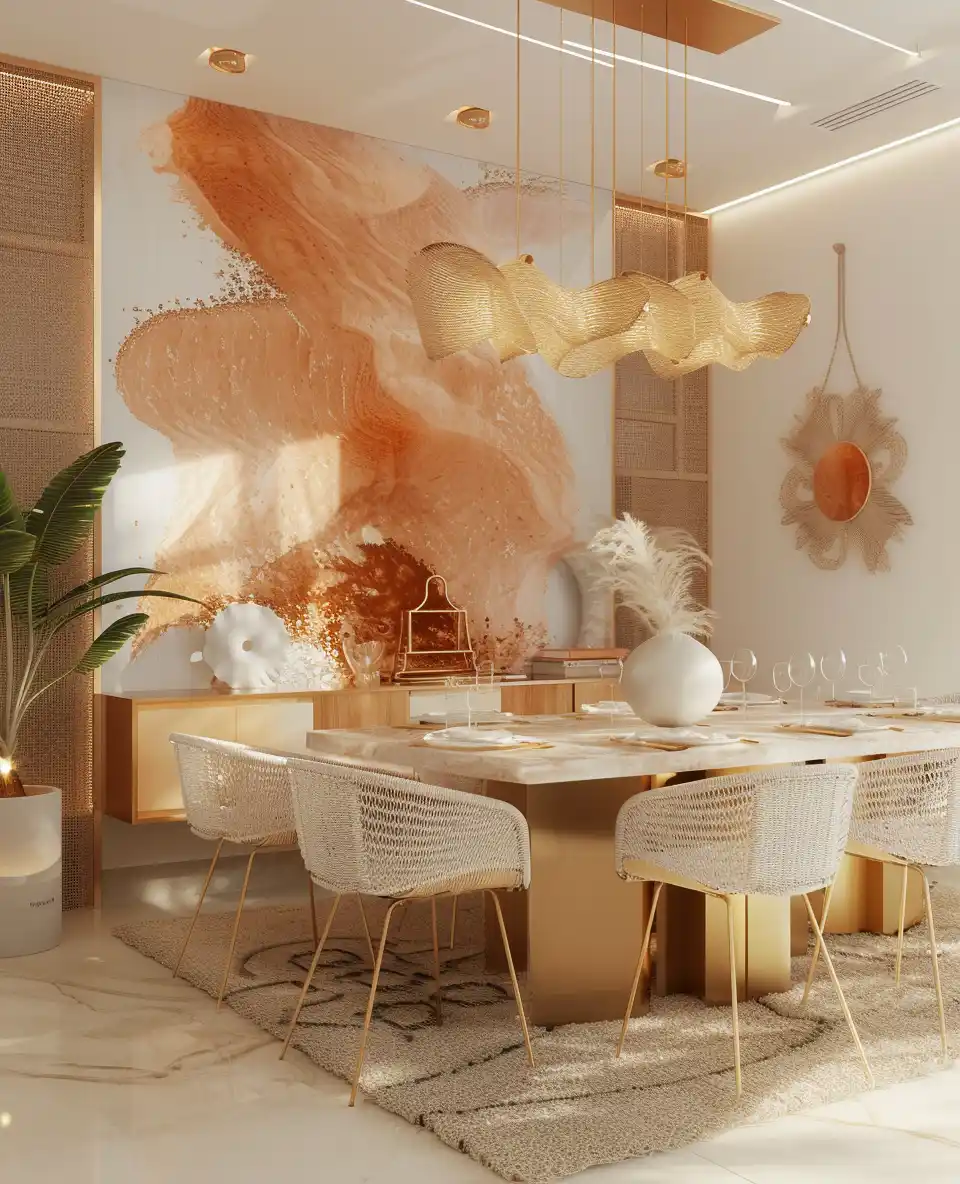
Make your dining area feel uniquely yours by adding personal touches like family photos, heirloom china, or DIY artwork. These elements tell a story and create a space that feels lived-in and loved.
Mix personal items with curated decor to strike a balance between style and sentiment. This helps your space feel authentic, cozy, and perfectly tailored to you.
30. Incorporate a Feature Ceiling
Give your dining area a dramatic edge with a feature ceiling. Use bold paint, wallpaper, or wood paneling to draw the eye upward and add dimension to the space.
Match your ceiling design with your dining room’s theme for a cohesive effect. A feature ceiling is an unexpected touch that adds luxury and uniqueness.
31. Introduce a Gallery Wall
A gallery wall filled with your favorite art, prints, or photos adds personality and visual intrigue. It’s a great way to create a curated, artful atmosphere in the dining space.
Stick to a consistent frame style or color scheme for cohesion, or go eclectic for a bold statement. The key is to plan your layout first and mix sizes and orientations for dynamic impact.
FAQ
Q. What are the key elements of a stylish dining area?
Ans. Key elements include the dining table, seating, lighting, and cohesive decor. Choose pieces that reflect your style and maintain comfort and functionality.
Q. How do I decorate a small dining space?
Ans. Use space-saving furniture, light colors, mirrors, and vertical decor. Opt for multifunctional pieces to keep the area open and practical.
Q. Can I mix different chair styles in my dining room?
Ans. Yes, mixing chairs can add charm and visual interest. Keep a consistent element—like color or material—for a balanced look.
Q. What lighting works best for dining areas?
Ans. Pendant lights or chandeliers above the table provide focused light and set the mood. Add dimmers for flexibility and ambiance.
Q. What colors are best for dining areas?
Ans. Warm neutrals, soft whites, earthy greens, or muted blues create a welcoming atmosphere. Bold colors can also work as accent walls or furniture pieces.
Conclusion
Designing a stylish dining area is about merging comfort, functionality, and personal expression. Whether you’re revamping a formal room or carving out space in a kitchen, these 30+ ideas offer creative ways to reimagine your dining experience. Focus on the elements that bring you joy—be it a dramatic light fixture, cozy seating, or a handcrafted table. With the right touches, your dining area becomes more than a space to eat—it becomes a setting for meaningful moments. Let these ideas guide you in creating a space that invites connection, style, and lasting comfort.
The dining area is more than just a place to eat—it’s where moments are shared, laughter echoes, and memories are made. Whether you’re hosting a family gathering or enjoying a quiet dinner, your dining space should reflect both your lifestyle and personal taste. With thoughtful design, any dining area—large or small, traditional or modern—can become the heart of your home. In this guide, we’ve curated over 30 stylish dining area ideas to inspire you to rethink your current setup. From space-saving solutions to luxurious finishes, these ideas are perfect for refreshing your dining experience. Discover new ways to combine functionality with beauty and see how even small changes in lighting, furniture, or layout can make a big impact. Whether you’re starting from scratch or just updating a few key elements, these ideas are tailored to help you create a space that feels welcoming, stylish, and unmistakably yours.


